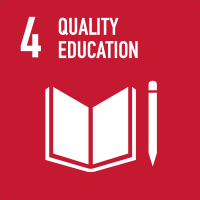Studying at the University of Verona
Here you can find information on the organisational aspects of the Programme, lecture timetables, learning activities and useful contact details for your time at the University, from enrolment to graduation.
Study Plan
This information is intended exclusively for students already enrolled in this course.If you are a new student interested in enrolling, you can find information about the course of study on the course page:
Laurea magistrale in Molecular and Medical Biotechnology - Enrollment from 2025/2026The Study Plan includes all modules, teaching and learning activities that each student will need to undertake during their time at the University.
Please select your Study Plan based on your enrollment year.
1° Year
| Modules | Credits | TAF | SSD |
|---|
1 course among the following1 course among the following2 courses among the following3 courses among the following2° Year activated in the A.Y. 2024/2025
| Modules | Credits | TAF | SSD |
|---|
| Modules | Credits | TAF | SSD |
|---|
1 course among the following1 course among the following2 courses among the following3 courses among the following| Modules | Credits | TAF | SSD |
|---|
| Modules | Credits | TAF | SSD |
|---|
2 courses among the following ("CLINICAL PROTEOMICS" 1ST and2ND YEAR; the other courses 2nd year only)Legend | Type of training activity (TTA)
TAF (Type of Educational Activity) All courses and activities are classified into different types of educational activities, indicated by a letter.
Experimental models in biomedical research (2023/2024)
Teaching code
4S010643
Academic staff
Coordinator
Credits
6
Language
English
Scientific Disciplinary Sector (SSD)
MED/46 - BIOTECHNOLOGY AND METHODS IN LABORATORY MEDICINE
Period
Semester 2 dal Mar 4, 2024 al Jun 14, 2024.
Courses Single
Authorized
Learning objectives
The course is designed to provide a broad survey of experimental systems (in silico, in vitro, and in vivo) for the modeling of cancer and neurodegenerative diseases with the regard to disease progression, changes in the microenvironment, and preclinical evaluation of drug efficacy. The different experimental models will be defined based on different parameters: (i) biological complexity; (ii) field of application; (iii) quantitative and qualitative features; (iv) advantages and disadvantages; (v) integration and cross-validation with other experimental models. Through teamwork activities, the students will discuss specific examples from current scientific literature on the use of given experimental models to address relevant biological questions. Attention will specifically be paid to the evaluation of model' suitability, results' reproducibility and clinical translation of the results. This course will provide the students with the means (methodological and technological) to design and execute pre-clinical studies. A relevant part of the program will focus on choice and use of appropriate experimental systems for addressing specific research questions. Specific objectives of the course include: -identification of laws and ethical regulatory frameworks for handling of laboratory animals; - description of protocols for the generation of genetically engineered mouse models; - genotype and phenotype analysis of laboratory animals; - identification of environmental factors and common infections that might affect interpretation of the results; - protocols for the derivation of cell cultures and their use in pharmacological screens; - protocols for genetic perturbation analysis of cell cultures; - description of protocols for cocultivation of different cell types; - principles of cross-species analysis.
Prerequisites and basic notions
Knowledge of basic concepts of molecular and cellular biology as well as of genetics is required.
Program
) The class is organized in 4 teaching units detailed below
UNIT 1-CELL CULTURE
Design and Equipment for a cell culture laboratory
Cell culture-basic principles (type of cell cultures, cell culture systems [2D, suspension, and 3D], advanced techniques [organoids, tissue slices, organ-on-a-chip], quality controls)
Cell Cultures in oncology
Cell Cultures in neurodegenerative diseases
Pros and Cons of Cell Culture
UNIT 2-ETHICS AND LEGISLATION ON THE USE OF MATERIALS AND MODELS IN BIOMEDICAL RESEARCH
3R principles (reduction, replacement, refinement)
Experimental protocols for clinical studies
UNIT 3-MOUSE MODELS
Design and Equipment for Animal facilities
Mouse models of Cancer and Neurodegenerative diseases (Origins and History of Mouse models, transgenic mouse models, Inbred/Outbred, conditional knockout/knockin, genetically-engineered mouse models, animal models of chemical carcinogenesis, pharmacologically induced mouse models, behavioral models, chimeric tumor and organ transplant models)
Analyzing Mouse Phenotypes (Anatomic Pathology, Imaging, Immunophenotyping, Behavioral tests)
Pros and Cons of Mouse Models in Biomedical research
UNIT 4-CASE STUDIES
Didactic methods
The class will include fontal lessons, discussion with the students of specific research studies using journal club format as well as discussion of case studies. Teaching material will be provided to the students in the classroom.
Learning assessment procedures
Verification will be a written examination test mainly composed of close-ended questions and few open-questions in order to cover the whole class. The test takes place in an hour. Students will be given the opportunity to complete the verification with an oral examination (optional)
Evaluation criteria
The basic knowledge of the discipline is assessed.
Criteria for the composition of the final grade
The evaluation is expressed in thirtieths; the results are communicated through the University registration system.
Exam language
Inglese


